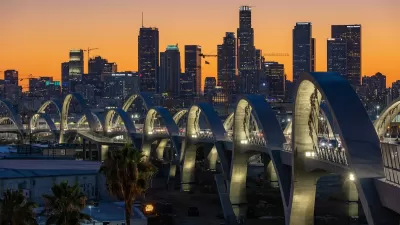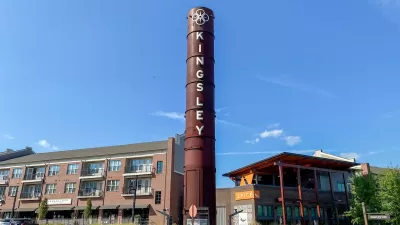Seven years after a celebrated public-private partnership, NoMa proves a smart growth success, write Rachel MacCleery and Jonathan Tarr.
When we reported on the completion of a new transit station in Washington, D.C.'s languishing North of Massachusetts neighborhood some seven-odd years ago, stakeholders already recognized its massive development potential. Just blocks north of Capitol Hill and the bustling Union Station Railway Hub, the neighborhood was dotted with empty warehouses and vacant lots at a time when the federal government was looking to move out of Downtown in search of lower rents. Now, the neighborhood is coming into its own.
But NoMa's bright future wasn't always so clear. Early development depended on the collaboration of federal and local decisionmakers, as well as private landowners. Urban Land Institute trustee James Curtis said the project required a "leap of faith" for all involved. "No one, I think, could have foreseen at the time what NoMa would become." According to MacCleery and Tarr, even the local transit authority "initially was not enthusiastic about the project."
With the help of a nonprofit corporation formed "to organize and leverage private investment," stakeholders raised $120 million to build the station, which was the critical first step in moving federal offices into the area. Now, five years after the formation of a local business improvement district, NoMa is home to 40,000 jobs and $7 billion in private investments.
"For a long time, no one was sure if anyone would live in NoMa's new buildings," said BID President Robin-Eve Jasper. "But now we know who is here, and it's at just the right time to think about things like parks and the public realm."
FULL STORY: NoMa: The Neighborhood That Transit Built

Alabama: Trump Terminates Settlements for Black Communities Harmed By Raw Sewage
Trump deemed the landmark civil rights agreement “illegal DEI and environmental justice policy.”

Planetizen Federal Action Tracker
A weekly monitor of how Trump’s orders and actions are impacting planners and planning in America.

The 120 Year Old Tiny Home Villages That Sheltered San Francisco’s Earthquake Refugees
More than a century ago, San Francisco mobilized to house thousands of residents displaced by the 1906 earthquake. Could their strategy offer a model for the present?

In Both Crashes and Crime, Public Transportation is Far Safer than Driving
Contrary to popular assumptions, public transportation has far lower crash and crime rates than automobile travel. For safer communities, improve and encourage transit travel.

Report: Zoning Reforms Should Complement Nashville’s Ambitious Transit Plan
Without reform, restrictive zoning codes will limit the impact of the city’s planned transit expansion and could exclude some of the residents who depend on transit the most.

Judge Orders Release of Frozen IRA, IIJA Funding
The decision is a victory for environmental groups who charged that freezing funds for critical infrastructure and disaster response programs caused “real and irreparable harm” to communities.
Urban Design for Planners 1: Software Tools
This six-course series explores essential urban design concepts using open source software and equips planners with the tools they need to participate fully in the urban design process.
Planning for Universal Design
Learn the tools for implementing Universal Design in planning regulations.
Clanton & Associates, Inc.
Jessamine County Fiscal Court
Institute for Housing and Urban Development Studies (IHS)
City of Grandview
Harvard GSD Executive Education
Toledo-Lucas County Plan Commissions
Salt Lake City
NYU Wagner Graduate School of Public Service





























